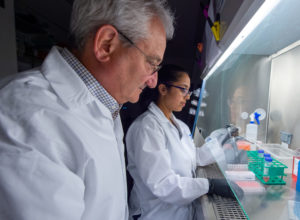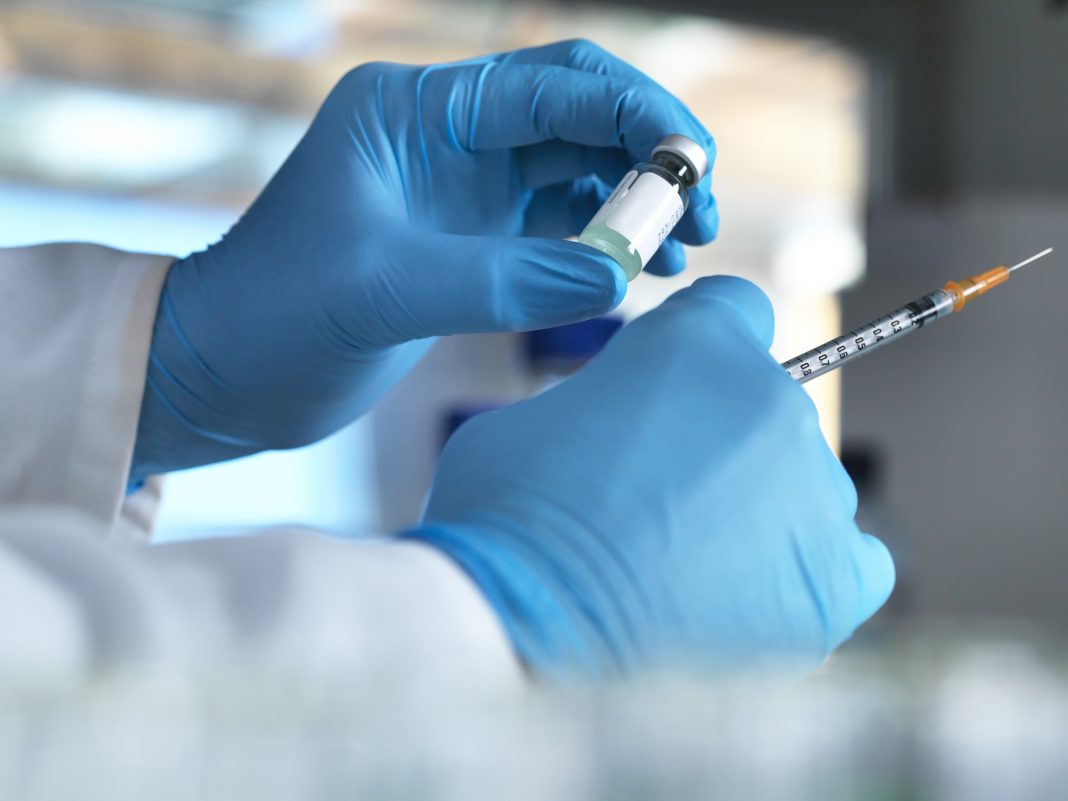It would be difficult to find a topic that has garnered more interest this past year than coronavirus vaccines. While most of the world is focused on SARS-CoV-2, some scientists, like a team at the Wistar Institute, have been trying to tackle another coronavirus infection—Middle East respiratory syndrome coronavirus (MERS-CoV).
The team reported that a synthetic DNA vaccine candidate for MERS-CoV induced potent immune responses, and afforded protective efficacy in non-human primate (NHP) models, when given intradermally in an abbreviated, low-dose immunization regimen. A similar vaccine candidate was previously shown to be safe and tolerable with a three-dose intramuscular injection regimen in a recently completed human Phase I study and is currently in expanded studies of a Phase I/IIa trial.
This work is published in JCI Insight in the paper, “Intradermal delivery of a synthetic DNA vaccine protects macaques from Middle East respiratory syndrome coronavirus.”

“While several vaccine products are being advanced against MERS and other coronaviruses, low-dose delivery and shortened regimes are crucial to rapidly induce protective immunity, particularly during emerging outbreaks, as the current SARS-CoV-2 pandemic has emphasized,” said David B. Weiner, PhD, Wistar executive vice president, director of the Vaccine & Immunotherapy Center (VIC) and W.W. Smith Charitable Trust Professor in Cancer Research, who led the study.
Researchers evaluated the immunogenicity and protective efficacy of their MERS synthetic vaccine, which encodes a full-length MERS-CoV Spike (S) protein, when delivered intradermally using a shortened two-dose immunization schedule compared with intramuscular delivery of higher doses in NHP.
“Given that human efficacy trials for MERS vaccines may be challenging due to the low number of yearly cases, animal models such as our NHP model are valuable as a bridge with human data coming from early-phase clinical trials,” said Weiner.
In this study, Weiner and the team reported robust antibody neutralizing antibodies and cellular immune responses in all conditions tested. A rigorous virus challenge experiment showed that all vaccination groups were protected against MERS-CoV compared to unvaccinated control animals. However, the low-dose regimen with intradermal delivery was more impactful in controlling disease and symptoms than the higher dose delivered intramuscularly in NHP models.
“To our knowledge, this is the first demonstration of protection with an intradermally delivered coronavirus vaccine,” said Ami Patel, PhD, a Caspar Wistar fellow at the Vaccine & Immunotherapy Center and one of the lead authors of the paper. “Intradermal delivery of synthetic DNA vaccines has significant advantages for rapid clinical development. It can be dose sparing and has higher tolerability in people compared with intramuscular injection. The positive results of this study are important not only for the advancement of this MERS vaccine but also for development of other vaccines.”
“Our team is also advancing a COVID-19 vaccine through clinical trials, and we were able to do so in a very short time thanks to our previous experience developing the MERS vaccine,” added Weiner.
Importantly, no evidence of adverse effects on the lungs was observed in any of the dosing groups compared to unimmunized control animals. Through the assessment of a large panel of blood cytokines, researchers showed significant decrease in all mediators of inflammation, which further suggests the vaccine prevents the destructive inflammation induced by coronaviruses.
“In the past twenty years, three new coronaviruses have emerged and caused human outbreaks. The current SARS-CoV-2 pandemic has further emphasized the importance of rapid infection control for coronaviruses and other emerging infectious diseases,” said Emma L. Reuschel, PhD, a staff scientist in the Weiner lab and co-first author on the study. “Vaccine candidates that are simple to deliver, well tolerated, and can be readily deployed in resource-limited settings will be important to achieve control of infection.”



